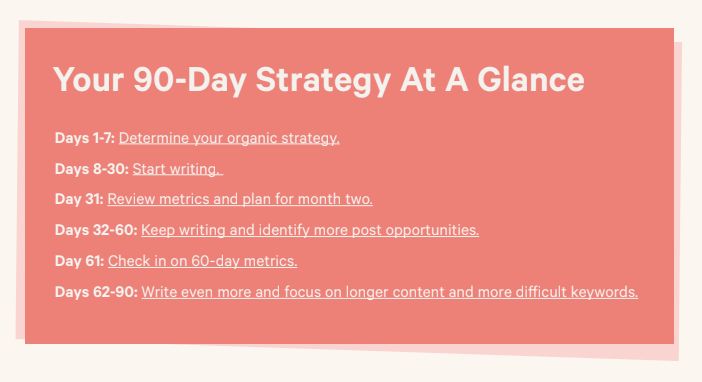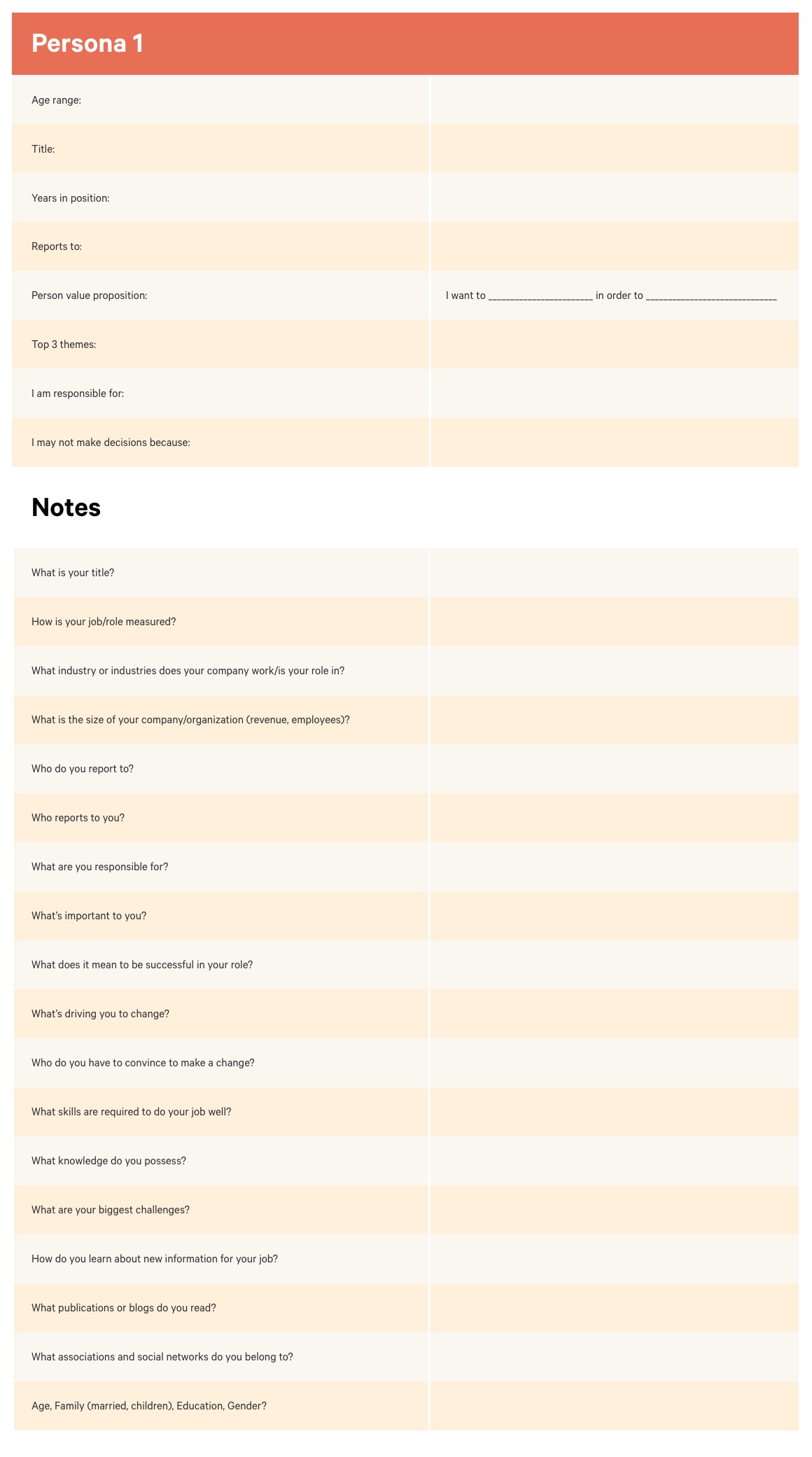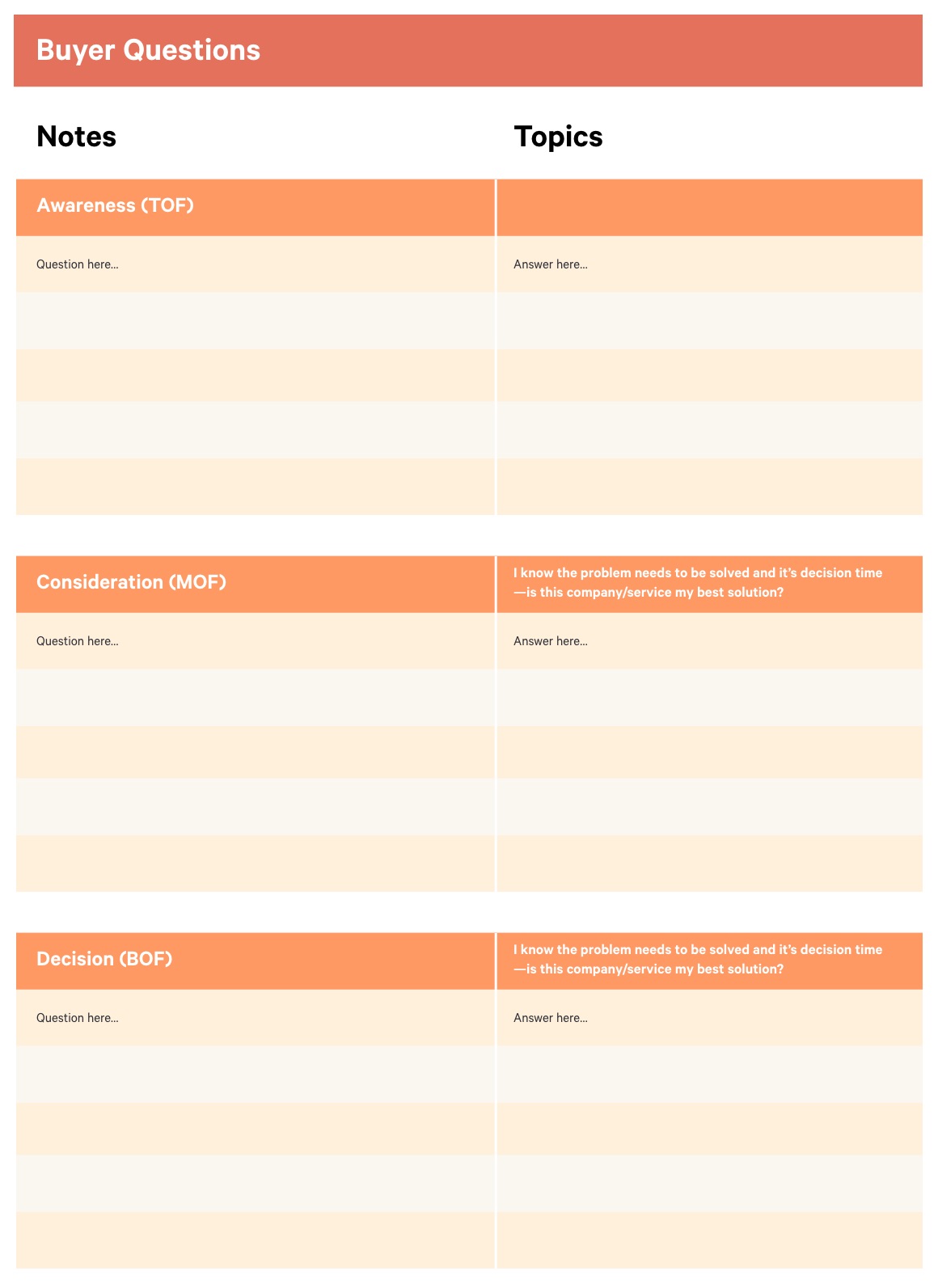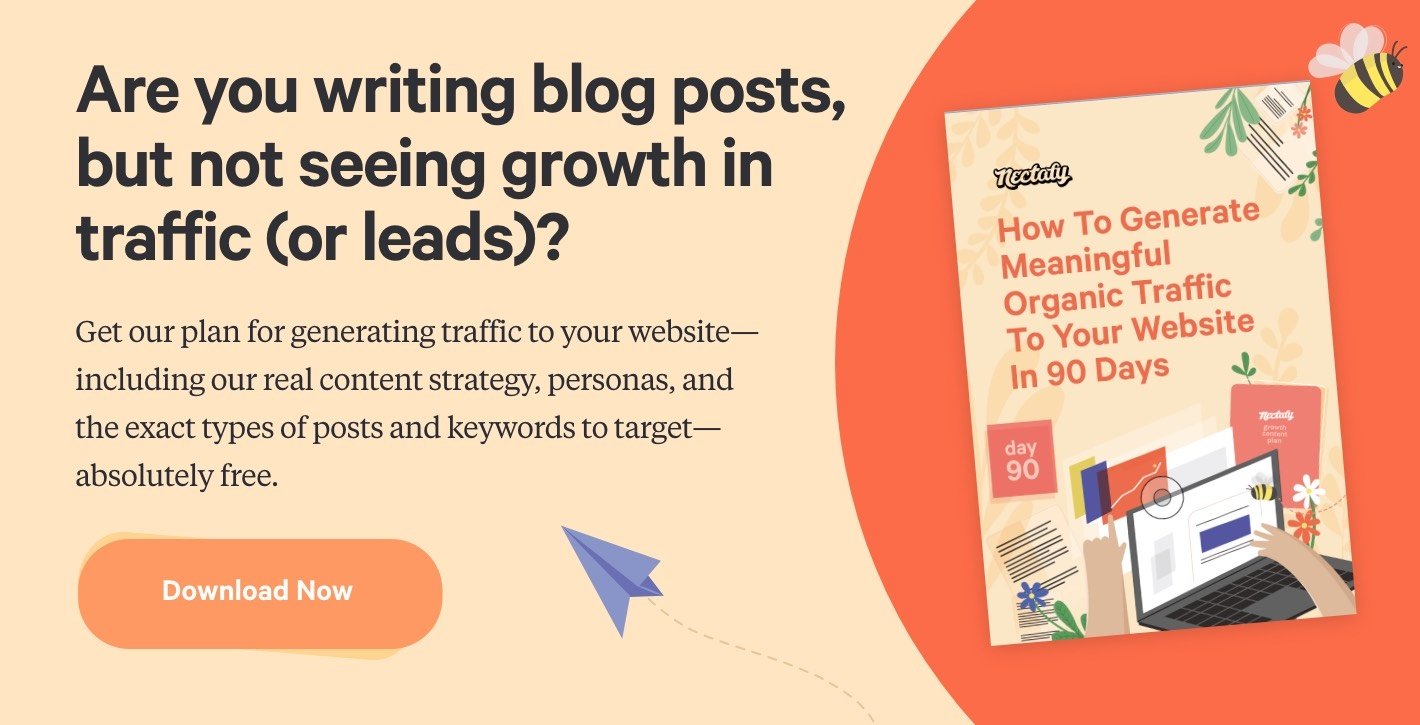How To Generate Organic Website Traffic In 90 Days


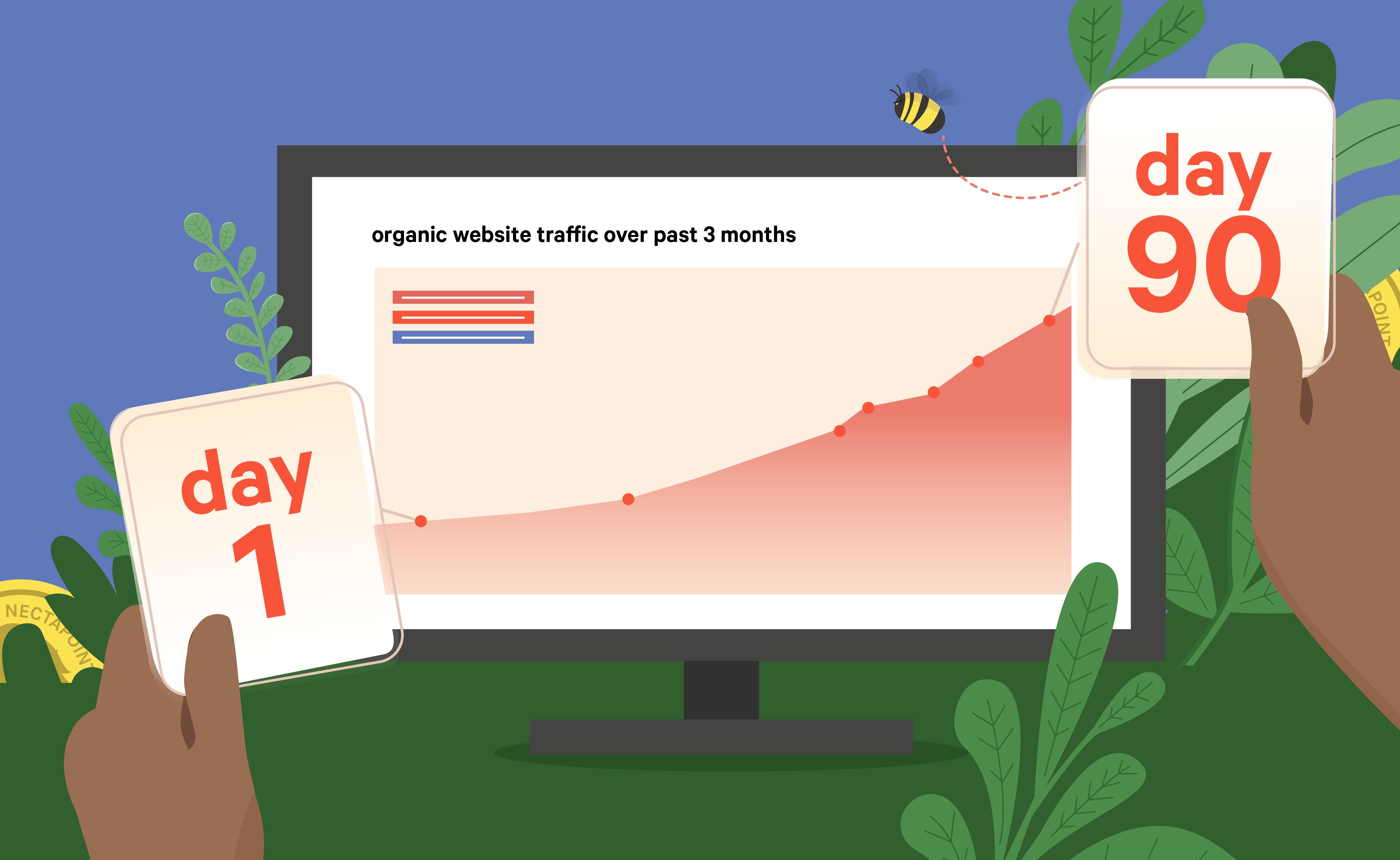
This is an excerpt from our 30-page playbook, “How To Generate Organic Website Traffic In 90 Days.” Click the link to download the PDF.
So you’ve heard content marketing (what we call “growth content”) is a great way to identify customers organically and drive them to your website, and you’re ready to try it out for yourself. Great! But do you have a plan to execute it?
If not, don’t worry—we’ve got you covered. If you’re starting from zero and have 90 days to drive organic traffic to your website, here’s exactly what you need to do, day by day, to reach your goal.
Days 1-7: Determine Your Organic Strategy
Days one through seven are dedicated to creating the plan that will guide your strategy for the entire 90 days. Here’s a daily breakdown of what you need to do.
Part 1: Define your buyer persona.
Buyer personas, as defined by HubSpot, are “semi-fictional representations of your ideal customer based on market research and real data about your existing customers.” On day one, your team will create a single persona that best represents your ideal customer, and identify the demographics and daily challenges of each. The result will be a semi-fictional “person” you’ll write for in the content you create.
Here’s the more detailed process:
- Identify the persona. (1 hour)
- Create a profile for the persona. (1 hour)
- Create buyer questions for the persona. (1 hour)
1. Identify the persona:
-
Think about who buys from you in terms of demographics. If you grouped your typical customers together, what are their commonalities? If you’re a B2B company, sometimes it’s a good idea to start by considering your buyers’ job titles. Are your customers marketing managers in large companies? CEOs of midsize businesses? You may come up with several different categories of people, and right now, that’s okay.
Example: At Nectafy, we have two main categories of customers: marketing managers and CEOs.
-
Ask yourself, “Is this who we want to target?” Now that you have several categories of customers in mind, think through whether or not they’re the type of customers you want to target. Maybe you’d like to focus on one particular client category over some of the others. Or maybe your business is transitioning into a new product or service that would appeal to a category of customers you haven’t yet reached.
When you create buyer personas, you only want to concentrate on the customer base you want more of in the future.
Example: A couple of years ago, we wanted to transition Nectafy from working with small businesses to working with larger companies, so when we created our buyer personas, we didn’t include a “small business owner” category (even though we had a small business owner customer base at the time).
-
Narrow down the number of customer categories to as few as possible. Pick the top persona, since we’re only working on one right now. If your narrowed-down customer list has more than two or three categories on it, try to narrow it down even further. For example, if you have two categories that are similar, combine them. You don’t want too many buyer personas. The narrower your focus, the better the results.
Example: A few months ago, when we were creating buyer personas for one of our clients, we discovered that they had two similar customer base categories—“small business owners” and “franchise owners.” While those two categories of customers had some significant differences, we already had two other customer categories we knew we needed in the mix. So we decided since the franchise owners we were trying to reach were also small business owners, their commonalities outweighed their differences (especially when it came to why they bought our client’s product). We settled on combining those two categories into one.
2. Create a profile for the persona.
This is actually the most important step in the process. You’ll base your entire inbound marketing plan on this information! So take your time researching and discovering everything you can about your buyer persona.
We use this spreadsheet to help us create our buyer profiles. It’s easy to use—just look at each of the questions in the overview section, and then answer the questions in the notes section. (You can download it here for use with your own clients!)
3. Create buyer questions for the persona.
Next, put yourself in your personas’ shoes and think about the questions they might ask as they are moving through the funnel toward a solution for their challenge.
We use the same spreadsheet to complete these questions (along with the persona), and then combine it all to create the entire profile. In addition to asking your team these questions, it is helpful to speak with someone who matches your persona (a potential or current client, for example)—they may provide insight into questions you weren’t aware of.

